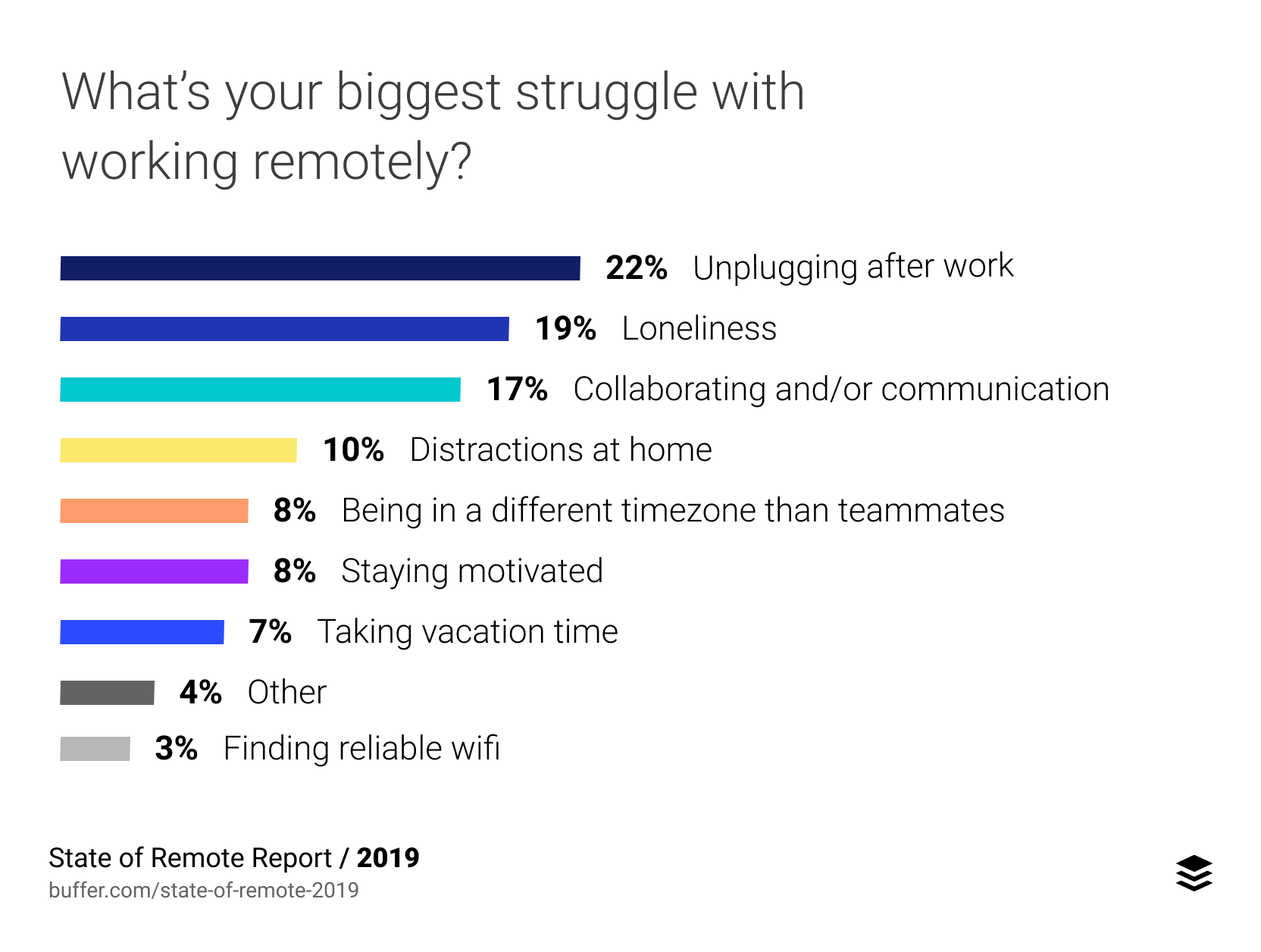What are the differences between working from home versus working in an office? Let’s compare them side-by-side to help you understand the unique advantages and disadvantages of each. Working From Home and Working in an Office.
Research from Owl Labs suggests that approximately half of employees typically work from home at least once a week and a third work remote jobs full-time.
Many organizations have shifted their tools and systems for remote teams for the first time due to the COVID-19 pandemic. For employees and employers, this is a major adjustment.
Commuting
The average American worker spends at least 27 minutes on their daily commute to work, and it is getting worse. More than 14 million people spend an hour or more traveling to work,” according to NPR.
That’s a lot of time you can save by becoming a telecommuter! Telecommuting is another way to say working remotely or from home by making full use of the internet, email, and phone.
However, some folks enjoy waking up early, getting ready, and having the separation of home and the office. This is why many folks who work remotely still opt to go to a coffee shop or a coworking space.
The bottom line is people hate commuting. Work-life balance continues to surge on the importance meter for modern-day employees. Companies that don’t recognize this are missing a huge opportunity to adopt work from home strategies that benefit their workforce.
A poll posted by CEO of Product Hunt, Ryan Hoover, suggests that most people would take a pay cut if it gave them the ability to work remotely. Perks like infinite vacation time, free food, and 401k weren’t as important when compared to the benefits of working remotely.
Let's say you're looking for a new job. What's most important to you? 🤔
— Ryan Hoover (@rrhoover) September 14, 2018
Communication
According to research from our 2020 State of Business Communication Report, face-to-face communication is the most preferred communication method by employees.
Not counting video conferencing, face-to-face communication is something you really only get in an office space. It’s not only beneficial when planning for business, but it strengthens relationships and rapport with other employees. There’s something about relationship-building that happens when you sit next to someone or bump into each other at the coffee machine.
Communication still happens when you’re working remotely — it’s just different. Face-to-face communication turns into video calls. Short conversations turn into Slack messages. Emails … well, those stay emails. Nobody escapes those!
One compelling advantage of working from home is the ability to work anywhere. You don’t even need a laptop. With a full-featured business phone app, employees can make and receive calls, attend conference calls, message colleagues, and stay online using their iPhone or Android.
To improve communication for remote employees, we’ve seen many organizations require video conferencing over traditional phone calls when communicating with coworkers. Teams should have conference calls to align themselves with business goals. For fun, employees can even host online game nights to get to know each other outside of office life.
Some teams even rely on social media for communication. For example, Close.com says they use Snapchat internally for team building. It’s a cool and clever way to use social media to stay connected while working remotely.
Flexibility
When working from an office, it’s likely you have a set schedule. Your alarm goes off at the same time every day, you grab your morning coffee at 7:05 am, and you’re at your desk by 9 am ready to work.
When it comes to working from home, it’s a little different. You now have the flexibility to wake up when you choose and tailor your day to your needs. If your company is new to remote work, chances are they still want all employees working the traditional work hours of 9-to-5. With remote work, you can now wake up (a little) later, pick a time for lunch, and close your laptop when you want — for some, that’s 4 pm, others it could be 7 pm.
As more companies adopt a remote-first policy, working hours will shift to fit the employee’s schedule. This shift means more flexibility on when you start and end your day and where you work from. You should be able to work from anywhere that has a solid internet connection!

Many employees struggle to disconnect when working from home. Up to a third of employees say they struggle to balance work and home life when working remotely. It’s easy to shut down your computer when you see fellow office workers start to pack up for the night, but when you’re at home, those cues don’t exist.
The option to freelance and take on side projects is another massive benefit that comes with working from home. The time you waste on commuting could be put toward taking on side projects or freelancing. It’s far more lucrative than sitting through traffic jams!
Office Environment vs. Home Environment
Do you work from a cubicle? An open office plan?
When working at the office, you don’t have a choice in your work environment or office setting. You might have a noisy coworker, or sit under the air conditioner, which could impact your productivity.
Working from home enables everyone to set up their optimal home office or workstation.
You can choose a standing desk over a sitting one and select your choice of office furniture. Working from home enables you to understand your optimal work environment, whatever it may be.
Financial Costs
The differences from working from home versus working at an office can be seen when it comes to finances — and we’re not talking about how much money you earn.
When working at an office, you pay for the costs of commuting, such as public transit, gas, or maintenance expenses. If you’re driving, you might also have to pay for parking. You likely also pick up a coffee or buy lunch during the day. All of these expenses add up.
When you work from home, there are tons of financial perks. You don’t have to worry about sitting in traffic, commuting expenses, and you won’t be tempted to go out after work and spend money on happy hours and eating out.
Working from home has its own costs. In addition to broadband internet costs, employees need to think about their energy costs like electricity. They may also carry “startup” costs for telecommuting technology typically burdened by employers. Typical work-at-home expenses include desks, chairs, network routers, and monitors.
While you save in some ways, there are other types of costs to think through.
Productivity
A study conducted by UC Irvine found that a typical office worker is interrupted every 11 minutes. If that wasn’t bad enough, it takes 25 minutes to get back on task. Yikes.
That’s a big hit to employee productivity. The nature of working remotely doesn’t make it inviting to chat with coworkers. Needless to say, productivity can get a huge uptick with remote workers. For example, call center employees that work from home were able to boost their productivity by 13%, according to a Stanford study. Consistent research has shown that remote workers log longer hours than their office-bound counterparts.
Studies show that it’s clear there is increased productivity in working at home versus working in an office. However, there can be a learning curve on how to increase your productivity and reduce distractions at home.
Management
Many organizations have had to switch to remote work for the very first time. Managers are likely concerned because they’ve never had to manage a remote workforce.
When working from an office, managers have a clear view of what team members are working on. They can go up and ask questions, have daily check-ins, and have whiteboarding meetings to make sure everything is on track.
That’s not the case when it comes to working remotely.
This is why having the right tools is critical to remote work success. We leverage a combination of great leadership and powerful tools like Asana to knock out big projects.
As a manager, you might have the desire to micromanage employees as they go remote. Instead, we suggest trusting people to perform until they prove otherwise. Employees want to do well; it’s your job to help them get there.
There Will Always Be Differences in Working From Home vs. Working Remote
Some call these differences advantages versus disadvantages — we call them opportunities. The team at Nextiva works remotely, and we’ve realized even more notable productivity gains from our cloud phone system to accelerate the shift from the office to work from home.
As many companies make the leap, they will soon discover that a remote workforce can be a smart, strategic move. To realize all the benefits, employers (and employees alike) need to be intentional with their business communication.



